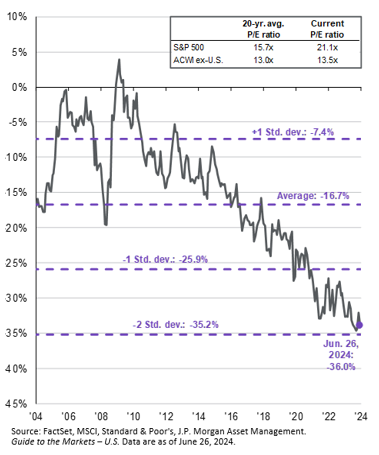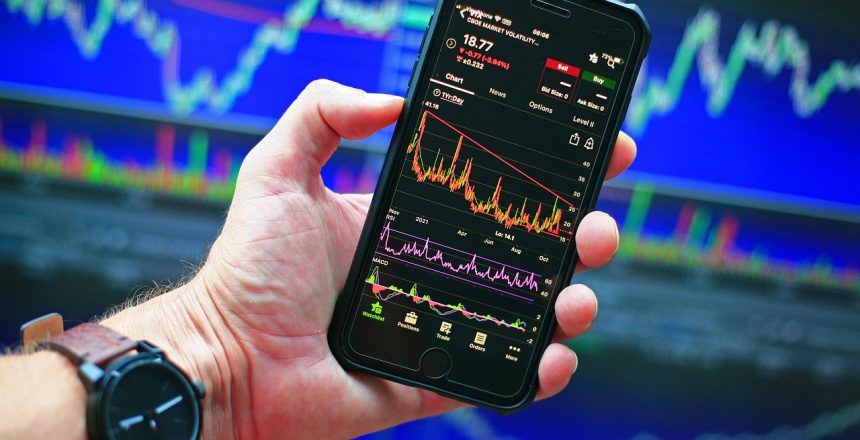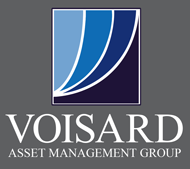Our last few articles focused on the S&P 500’s price-to-earnings ratio (P/E ratio). Today, we’ll shift gears and explore how the S&P 500 compares to international stocks, considering factors like valuation metrics, dividend yields, and the impact of currency fluctuations. In this article, we will use the ACWI ex-US index to represent international stocks as it contains broad exposure to both developed and emerging market countries.
Valuations
Over the past 20 years, the S&P 500’s P/E ratio has been, on average, 16.7% higher than that of international stocks. The S&P 500 currently boasts a P/E ratio of 21.1x, while the international market index has a P/E ratio of 13.5x. International markets are currently trading at a 36% discount compared to U.S. markets. This is the most significant difference in the past 20 years. While this fact alone can turn heads, there are other factors to analyze that may also benefit international markets.
Dividend Yield
Another factor to consider when evaluating an investment is the dividend yield. This is how much income you will earn per year for every dollar held of an investment. On average, over the past 20 years, international stocks have provided dividend yields 1.2 % higher than US stocks. As of June 26, 2024, the dividend yield of the ACWI ex-US is 3.2%, while the dividend yield of the S&P 500 is 1.4%. Over the next year, the ACWI ex-US is forecasted to have a dividend yield 1.8% percentage points greater than the S&P 500.
Currency Risks & Opportunities
Fluctuations in the value of the U.S. dollar impact returns on international investments. If the dollar strengthens, profits earned internationally are worth less when converted from the local currency to the USD. Conversely, a weaker dollar can enhance returns when converted. The dollar reached multi-year highs in September 2022 and has recently undergone a correction. Therefore, international investors should consider currency movements when evaluating international investments.
Summary
There is a reason almost all investment materials end with the phrase “past results don’t indicate future returns.” Put simply, valuations matter. While the S&P 500 has provided excellent returns over the last decade, its current valuation and lower dividend yield suggest future returns may not be as high as past returns. Objectively, international markets currently offer lower valuations and higher dividend yields than the S&P 500, however, investing in international markets has additional risks due to currency fluctuations and political instability in certain regions. Voisard Asset Management Group makes a concerted effort to track trends, find areas where there may be opportunities in portfolios, and execute without trying to be market timers. If you have any questions about your portfolio, we would be happy to have a simple conversation.


